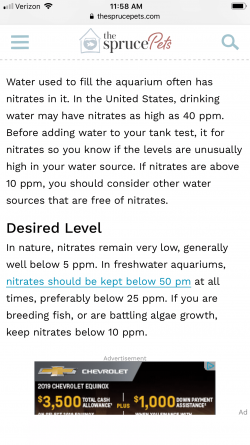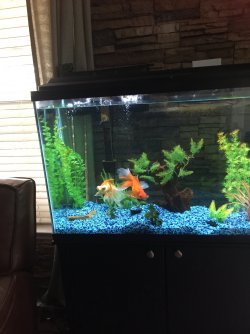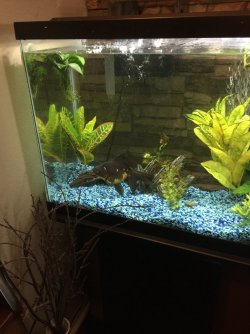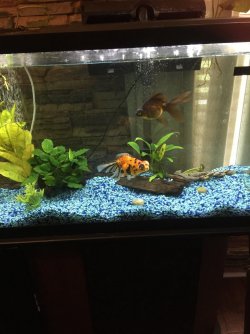Chris king
New Member
- Joined
- Jan 20, 2019
- Messages
- 15
- Reaction score
- 0
hi everyone ,
I have an issue with my nitrate levels , my tank has cycled (fishless) and I added my first few fish 2 weeks ago 3 platys . I did a 25% water change after a week and everything seemed fine until the next day when my nitrate levels rocketed ... I have an api master test kit and yes I am using it correctly as per instructions, my tank was reading 40ppm nitrate so I done a 40% water change and that made absolutely no difference . So I decided to test my tap water and guess what 40ppm ish in my tap water? I even went to the extent of buying another kit and testing again of course the same result 40ppm. What are my options here I live in the Uk and that seems to be high but still acceptable acording to my water supplier , I’m getting more worried about the fish everyday that goes by and although the fish seem perfectly fine at the min They can’t live like that forever surely .
Any help will be appreciated
Thanks in advance
Chris
I have an issue with my nitrate levels , my tank has cycled (fishless) and I added my first few fish 2 weeks ago 3 platys . I did a 25% water change after a week and everything seemed fine until the next day when my nitrate levels rocketed ... I have an api master test kit and yes I am using it correctly as per instructions, my tank was reading 40ppm nitrate so I done a 40% water change and that made absolutely no difference . So I decided to test my tap water and guess what 40ppm ish in my tap water? I even went to the extent of buying another kit and testing again of course the same result 40ppm. What are my options here I live in the Uk and that seems to be high but still acceptable acording to my water supplier , I’m getting more worried about the fish everyday that goes by and although the fish seem perfectly fine at the min They can’t live like that forever surely .
Any help will be appreciated
Thanks in advance
Chris







